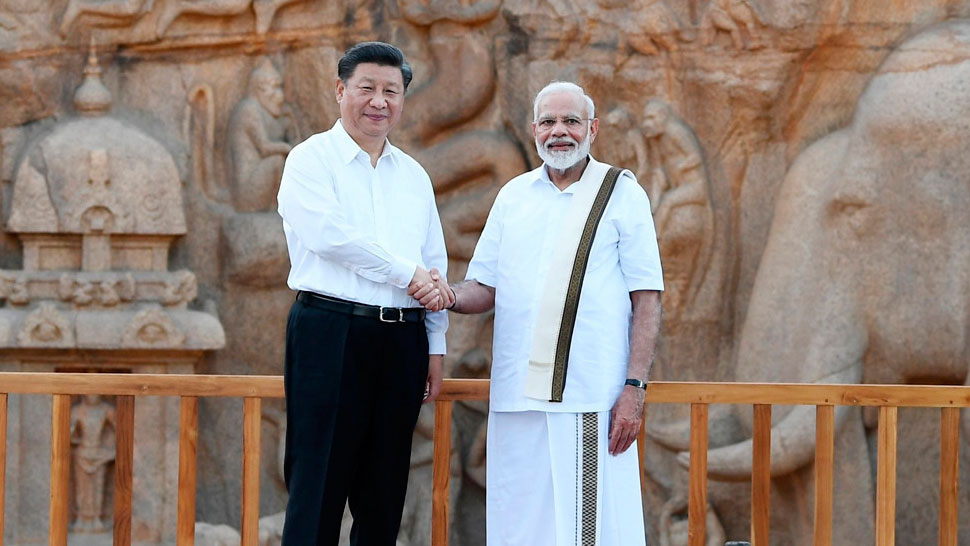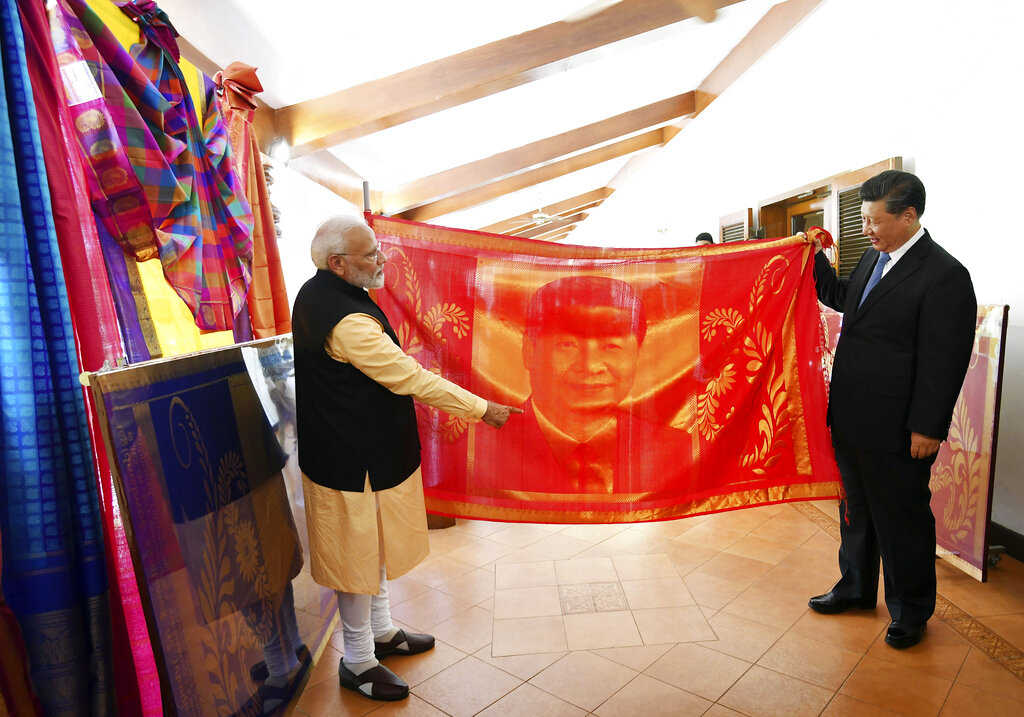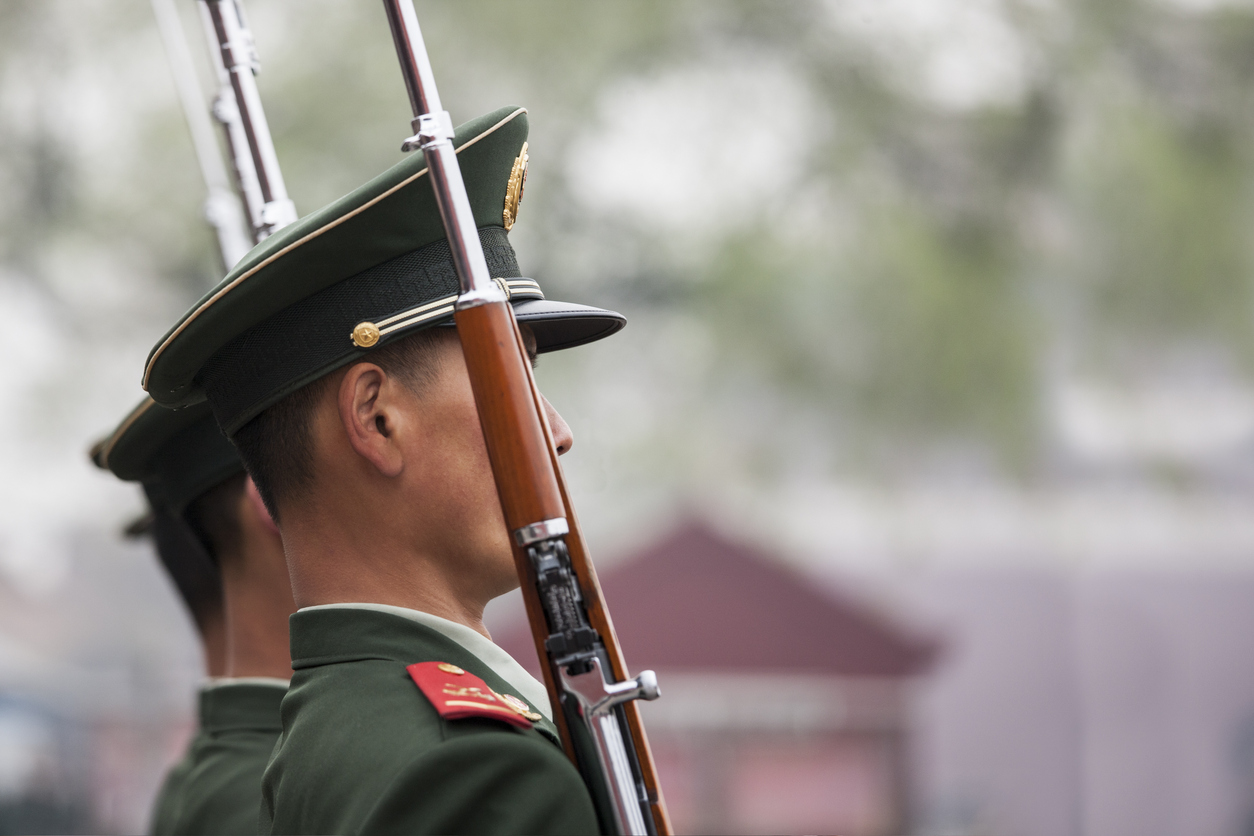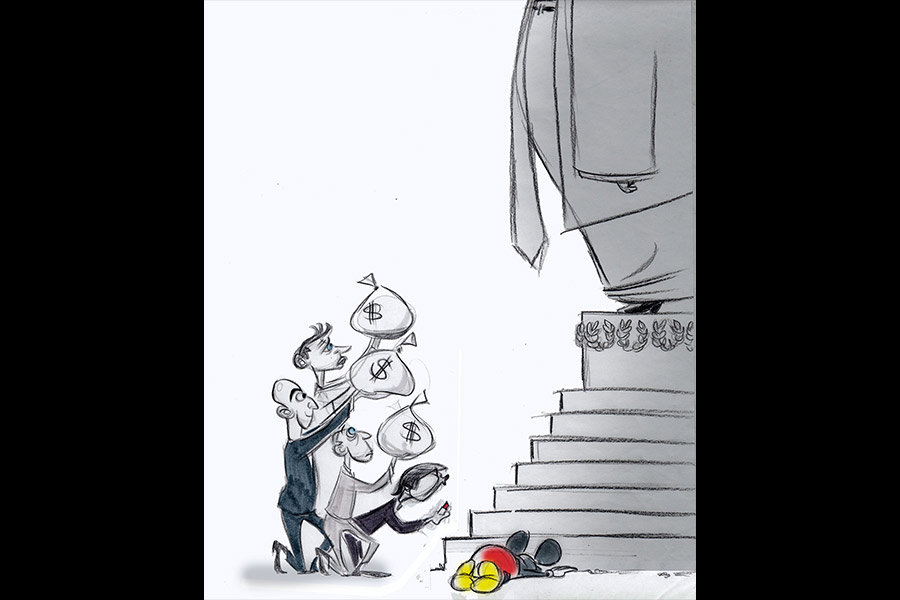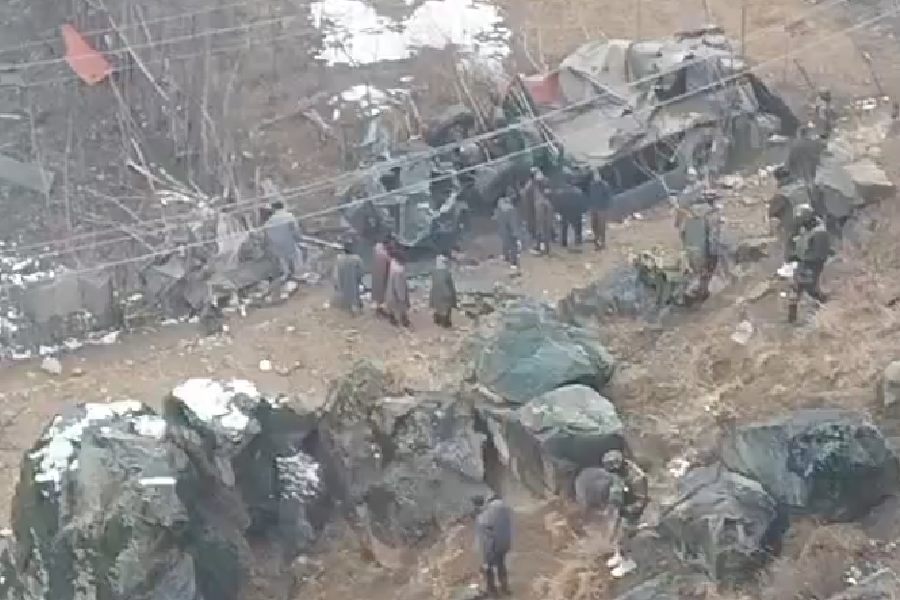It wasn’t exactly like Narendra Modi’s bromance-filled walk along Olga beach in Israel with Benjamin Netanyahu in July 2017, but it wasn’t very different either. Earlier this month, Modi took the Chinese president, Xi Jinping, for a stroll to the sea-facing temples and monuments in Mahabalipuram.
The start of the two-day informal summit between the leaders of the neighbouring Asian giants was meant to put them at ease and create a semi-official setting where they could speak frankly, unencumbered by officialdom. But for all the emphasis on informality, the ultimate aim of such meetings — their second after they met in Wuhan, China, last year — remains to improve relations between New Delhi and Beijing. Except that Modi appears to have mistaken the summit for a fancy dress competition.
While Xi dressed down from his usual suit-and-tie routine to walk alongside Modi in shirt and trousers, the Indian prime minister was experimenting with couture he doesn’t normally wear: a mundu teamed up with an angavastram. And that matters not because of Modi’s sartorial choices, but because of what it says to China and to other diplomatic interlocutors from around the world.
There’s little doubt that Modi’s symbolism was aimed at placating a Tamil population angered by Amit Shah’s suggestion that Hindi be made a national language. As Modi landed in Chennai, Twitter was abuzz with #GoBackModi messages. Tamil Nadu is one among only a handful of states where the Bharatiya Janata Party has never made serious inroads. Given the context, Modi’s move was perfectly reasonable from a politician.
But Modi was in Mahabalipuram in his capacity as the nation’s chief diplomat, not to campaign for votes. For some years now, Chinese officials have — you guessed it right— ‘informally’ indicated to reporters and analysts that they view Modi’s foreign policy towards their country as dictated by domestic electoral math. The mundu would only have reinforced those perceptions.
For India, that’s a cause for concern because it suggests that Modi might not quite have his eyes on the ball when it comes to ties with China. It’s a complicated relationship at the best of times. On either side of the Mahabalipuram meetings, the two countries engaged in testy shadowboxing.
Days before he arrived in India, Xi hosted the Pakistan prime minister, Imran Khan, in Beijing. There, he told Khan that he was watching the situation in Jammu and Kashmir and would defend Pakistan’s core interests — even though India has drawn a line in the sand when it comes to allowing any international intervention on its abrogation of Article 370. At the time, India appeared ready to send its own hard signals, including a military exercise in Arunachal Pradesh — parts of which China claims — ahead of Xi’s arrival.
But if Modi thought he could charm Xi during their informal summit, he had underestimated the Chinese president. From India, Xi flew to Nepal, where in a statement, he promised to safeguard the Himalayan nation’s “national independence, sovereignty and territorial integrity.” Given that Nepal shares a land border with only China and India, it’s clear who Xi’s loaded comment was aimed at.
Days later, China helped Pakistan avoid being blacklisted by the Financial Action Task Force. The Paris-based terror funding watchdog had placed Pakistan on its ‘grey list’ for failing to adequately cut off funding for UN-designated terrorists on its soil.
Meanwhile, India must decide whether to allow the Chinese telecom giant, Huawei, to participate in 5G trials. Ahead of Xi’s visit, the Modi government allowed the company to participate in a demonstration of its technology, and some of the heads of India’s biggest telecom players — such as Airtel’s Sunil Bharti Mittal — have asked for the firm to be allowed to join the trials.
To be sure, there’s no guarantee that India-China relations would have looked rosier had Modi focused less on his clothes and more on the briefing folders he would have been handed by his team ahead of the summit. Whatever India decides on Huawei, for instance, will carry risks. It doesn’t have the home-grown 5G technology to match the Chinese giant, and using Western technology will impact product costs. Allowing Huawei a toehold could, on the other hand, threaten the domestic Indian manufacturing market and earn the wrath of the Donald Trump administration, which has called for a global boycott of the company over charges that it’s involved in espionage.
It’s also true that the informal nature of the summit means that some of the specifics the two leaders discussed may simply have never made it to the foreign ministry’s official statement. We may instead only see any such tacit agreement between Modi and Xi play out in the coming weeks.
Yet when dealing with a tough negotiator such as Xi, it doesn’t hurt to appear focused on the task at hand, rather than on votes in an election down the line. At the very least, it shows your intent. Thankfully, their next informal summit is in China. So it’s unlikely Modi’s minders will pack a changshan — a traditional Chinese men’s jacket — in his suitcase when he visits.

